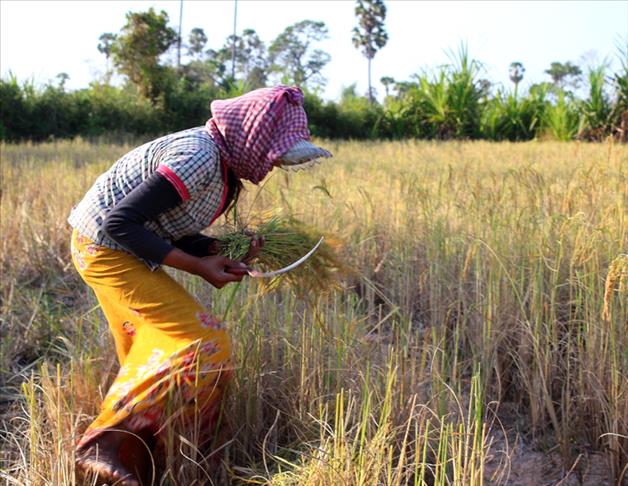Mine casualties rise 55 percent in Cambodia this year
Despite demining efforts, Cambodia's fields still littered with unexploded ordnance after three decades of civil war

By Lauren Crothers
PHNOM PENH
The number of people killed or injured by the unexploded ordnance that still litters Cambodia's fields after three decades of civil war rose by 55 percent during the first eight months of 2014 - a rise attributed to the increased use of heavy machinery in farming.
According to the latest report released by the Cambodian Mine Action and Victim Assistance Authority, 129 people were killed or injured by landmines and other explosive remnants of war (ERW) from January to August, compared to 83 casualties for the same period in 2013.
Heng Ratana, director-general of the Cambodian Mine Action Centre, told the Anadolu Agency on Saturday that he was saddened by the latest figures, which are due in part to villagers trying to make a living from the land.
"These eight months, we see the incidents by anti-tank mines increased, and this is proof that… for most of the incidents, land was being used to support agricultural activities," he told the AA. "We believe [the increase is] due to an extensive expanse of the use of heavy machinery and tractors.”
“We really want to see the number drop, but in real life, we cannot achieve that,” he added. Of the 129 casualties that occurred in 2014, 17 people were killed, 80 were injured and 32 people had to undergo amputations. Mines caused 57 (44 percent) of the incidents, and 72 (56 percent) were caused by other remnants.
Men were the majority casualties - 89 - while 22 were boys under the age of 18, six were girls, and 12 were women.
Despite years of demining efforts, the full extent of Cambodia’s contamination is still unknown. Decades of war in neighboring Vietnam, the Cambodian civil war, the brutal Khmer Rouge regime that followed, and the around 1 million tons of explosives dropped on it by the United States left the country one of the most contaminated in the world.
The Mine Action Centre director-general told the AA that fluctuations in the numbers of casualties every month are very difficult to predict, but that farmers eager to clear land in order to plant crops will often try and do it themselves if they don’t want to wait for one of the officially registered demining operations to arrive.
According to the Cambodia Mine/ERW Victim Information System, a total of 64443 casualties have been recorded since 1979 - 19701 of whom died, 35789 of whom were injured and 8953 had to have limbs amputated.
Of the casualties, 81 percent were men, 9 percent were boys, 8 percent were women, and 2 percent girls under the age of 18.
“Looking ahead, we have to put forward a policy or vision that has a kind of less impact,” Ratana said. “We are not going to clear all [unexploded ordnance] in the short run - it will be many years to come, 50 to 100, so we try our best to set up a vision that is more realistic to achieve in the next five to 10 years.”
He said that included an aim to clear 59 percent of what he called “high priority areas” spanning about 1150 kilometers squared over the next five years.
“It’s a very expensive and a slow process,” he warned.
Anadolu Agency website contains only a portion of the news stories offered to subscribers in the AA News Broadcasting System (HAS), and in summarized form. Please contact us for subscription options.

